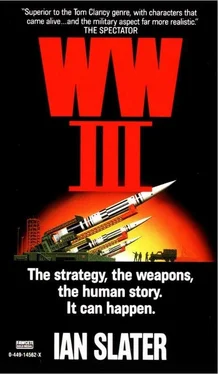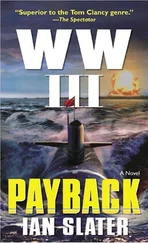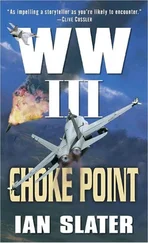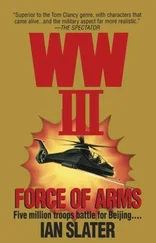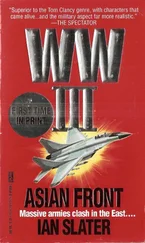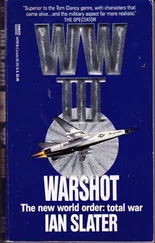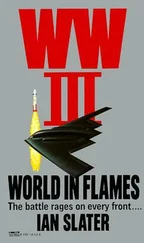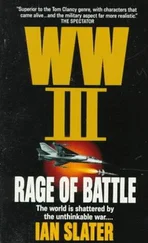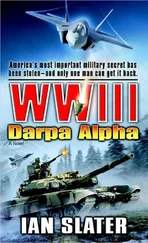Within minutes of General Kim ordering the PT-76s to withdraw as fast as possible, the M-1s were in trouble in the paddies, as Kim knew they would be. It was the culmination of a plan he had fought so long and hard for in Pyongyang, arguing against all the norms of military logic for a monsoon offensive rather than a winter or spring attack, when the ground would still be hard enough to allow for a rapid armored advance. He knew, as did everyone else, that the Abrams M-1 was quite simply the Cadillac of tanks, that next to them the PT-76s appeared as “Model Ts,” in his aide’s description, the old 76s tough and reliable in their own way but with nothing like the speed, armor, or shooting power of the American tanks. The Americans had long known this, and what Kim had banked on was the Americans’ very willingness to engage the PT-76s. He knew the M-1s, like the 76s, were also capable of fording waterways with the huge flotation skirting, but he also knew something else, something that came from a simple mathematical equation in the art of modern war.
The Abrams M-1 had been designed to go up against the equally heavy Russian T-90s and T-80s, a strategy that had not bothered itself with the old “tin can” PT-76 and so was not prepared for the difference between the ground pressure exerted by the fifty-four-ton M-1 and the ground pressure exerted by the fourteen-ton PT-76s. The difference, the M-1 exerting a ground pressure of 210 pounds per square inch as opposed to the mere 150 for the PT-76s, meant that each fifty-four-ton M-1 now had to spend vital time once it was stuck in the soft flooded ooze of the paddies while its flotation skirting was unfolded. In those few minutes the much lighter PT-76s were still free to maneuver. This single fact proved deadly for the Americans as Kim closed the trap.
In the mutual slaughter that Kim had predicted to his “dear and respected leader,” the M-1s’ laser range finders and 105-millimeter cannons put out an awesome rate of fire, crippling the PT-76s. The latter, having served Kim’s purpose of drawing the Americans into the paddies, were now sacrifical lambs as crack NKA infantry, able to set their aim on the temporarily stationary M-1s, delivered the knockout blows with everything from the old but reliable inventory of wire-guided Russian Saggers to sophisticated one-shot, one-time RPG 18s and 22s and the AT-5 Spandrels, whose hit probability at five hundred meters exceeded 74 percent. Contrary to what those outside the military believed, Kim was well aware of the fact that tanks, even the most modern ones, advancing without infantry support were much more vulnerable than was generally supposed and were one of the easiest targets to destroy, providing they stopped long enough for you to sight them in. The M-1s were able to spot some of the RPG 18 launchers because of their back-blast, which in the paddies created an aerosol spray of water behind the launchers. Even so, the M-1s, the giants in the contest of armor against armor, were for these few minutes at their most vulnerable, standing still in deep, muddy water, many of them knocked out of action by the inflatable skirting catching fire and in effect baking the four-man crews, especially the drivers, whose positions forward of the turret offered them less protection, and many of whom were machine-gunned as they tried to escape fume- and flame-engulfed tanks. Many of the gunners on the left flank, from Clemens’s company, most of whom hailed from the San Diego area, were among the first hit. Some of them drowned as they fell badly wounded, “flopping around in the water like winged ducks,” as Kim wrote in his glowing report to Pyongyang.
Few of the M-1s were holed by the NKA’s antitank weapons, the crews killed by sparling, the ricocheting of equipment knocked loose inside the tank by impact, creating a deadly hail of shrapnel whizzing around inside the tank like a scythe amid chaff, many of the Americans blinded from shattered periscopes, others burned alive despite the automatic extinguishers, which could do little if any of the M-1s’ fifty-five rounds of high-explosive and armor-piercing shells were hit. A dozen or so of the American commanders who opened the hatch to snatch a quick look at the all-round situation were dead within seconds from the NKA’s hail of infantry and sniper fire, the Americans slumping over the hatch, from which they had to be either dumped quickly overboard before the hatch could be closed or dragged back down, bleeding, often blocking vital steering and gunnery controls.
Kim’s infantry paid heavily, as well as the PT-76s, thirty-four of his tanks destroyed outright by the deadly accurate M-1s, which, for as long as they lasted in their stationary, or near stationary, positions, delivered as much as they got. But there were many more PT-76s than M-1s, and soon, under the combination of the more mobile PT-76s and heavy infantry antitank rocket and missile fire, all the American armor, except for one platoon of three tanks, was knocked out of action.
Kim knew that if the Americans were allowed time to retake the ground by air strike, then their logistical genius for quick repair would come into play, and tanks that had now been taken out of the battle because crews had either been killed or their M-1s had lost a track could be in action again in six or seven hours. Kim had never forgotten his father’s stories of how North Korean commanders had stood, mouths agape at the incredible speed with which American Seabees had cleared rough-timbered ground and laid down mesh airstrips within twelve hours. Accordingly, Kim sent in mop-up squads of demolition experts, some of whom were cut down by the few remaining M-1 crews manning the commanders’ and the loaders’ machine guns before they, too, were silenced. The NKA squads placed plastique on the tanks with times fuses set for forty minutes, giving all NKA squads time to clear the area.
The Uijongbu corridor exploded in a roaring cacophony of black-orange balls spewing into the dark and monsoon-riven sky as the plastique and rounds aboard the tanks exploded. Kim would have liked to use the tanks, but the NKA didn’t have the supporting ground crews for each tank that the American army had now instituted, or enough electronic experts to service the sophisticated equipment on board. Only two M-1s were spared so that when the day came that the South had been crushed, the tanks could be forwarded to Kaesong, where they would be airlifted by the big Russian Condor transport to Moscow for thorough dissection by the Russian army.
* * *
Seoul was Kim’s, and as tens of thousands of NKA regulars, reservists, and artillery closed in the ring of steel about the capital, it was an ashen-faced Cahill whose officers had given him firsthand observation reports of the carnage in the city above—”like tossing grenades into packed rooms,” one of them had said. Cahill was now confronted with the inevitable. By midnight Korean time the situation was so hopeless that, amid the shambles and smoke of what had been one of the most sophisticated electronic communication centers in Asia, the American general asked permission from Washington to surrender Seoul into enemy hands.
General Gray replied that any delaying action would help the reserves on the way from Japan, while SATINT suggested the NKA were pausing to ford the Han across pontoon bridges. Approximately a half hour later Cahill received more reports that thousands of NKA regulars, wearing normal peasant and worker garb, had, hours before the last bridges were blown, infiltrated the columns of refugees and were now causing further chaos and thwarting South Korean artillery batteries trying to reach the Han from the South.
At 1:00 a.m. the U.S.-ROK command, in effect Cahill, was given an ultimatum: seven hours to surrender or “answer for all the consequences.”
Читать дальше
